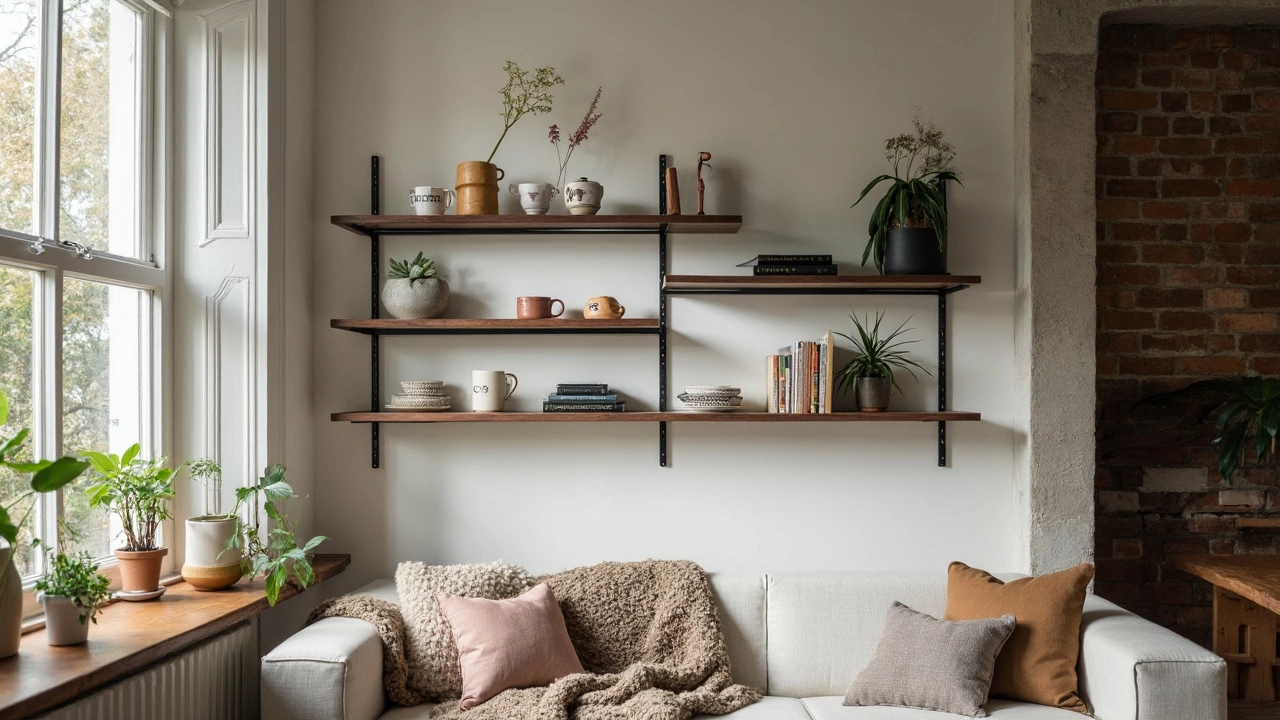Floating Shelves: Easy Ways to Add Style and Storage
Looking for a simple fix that makes a room feel bigger and more organized? Floating shelves are the answer. They hug the wall, hide clutter, and give you a place to show off plants, books, or favorite mugs. Best of all, they work in any size space and cost far less than a full‑length cabinet.
Before you buy, think about the purpose. Do you need a spot for heavy cookbooks in the kitchen? Or just a decorative ledge for picture frames in the hallway? Knowing the load will guide your material choice and bracket size.
Why Choose Floating Shelves?
Floating shelves keep the floor clear, which makes a room appear larger. Because the brackets are hidden, the shelf looks like it’s magically attached to the wall. This clean look fits modern, minimalist, and even rustic homes. If you pick shelves made from reclaimed wood or bamboo, you also add an eco‑friendly touch that matches the Eco Harmony Home ethos.
Another win is flexibility. You can move them when you rearrange furniture or change the colour of the wall. They’re also great for renters because you can install them with simple wall plugs and take them down without damaging the surface.
How to Install Floating Shelves Like a Pro
First, gather the right tools: a drill, level, stud finder, pencil, and the brackets that came with the shelf. If the shelf is heavy, aim for wall studs; otherwise, heavy‑duty wall anchors will do.
Measure twice and mark the height you want. A good rule of eye level is about 57‑60 inches from the floor, but adjust for your ceiling height and the items you’ll place on the shelf.
Use the stud finder to locate a stud and mark the centre. If you’re using anchors, drill a pilot hole at the mark, insert the anchor, and then screw the bracket in. Make sure the bracket is perfectly level before tightening fully.
Slide the shelf onto the bracket, give it a firm press, and double‑check it’s still level. If you notice any wobble, tighten the screws a little more or add a second bracket for extra support.
Now comes the fun part – styling. Start with a large piece, like a vase, then add smaller items like candles or books. Keep the arrangement balanced; a common trick is the 3‑2‑1 rule: three tall items, two medium, and one short.
Maintenance is easy. Dust with a soft cloth and wipe with a damp rag when needed. If you used wood, a light coat of natural oil once a year will keep it looking fresh.
Floating shelves are a small change that makes a big impact. They give you extra storage, let you showcase personality, and can be a greener choice when you pick sustainable materials. Ready to try one? Grab a shelf that fits your style, follow the steps above, and enjoy the instant upgrade.
-

Are Floating Shelves Dated? A Fresh Look at Shelving Trends
Are floating shelves stuck in the past, or are they still rocking modern homes? This article looks at why floating shelves aren’t going anywhere, how they’ve changed, and how you can make them work in your space. You’ll get tips for updating the look, ideas for arranging your stuff, and a peek at how designers use them now. Find out how to avoid common mistakes and make floating shelves fit your style—no matter where you live.
